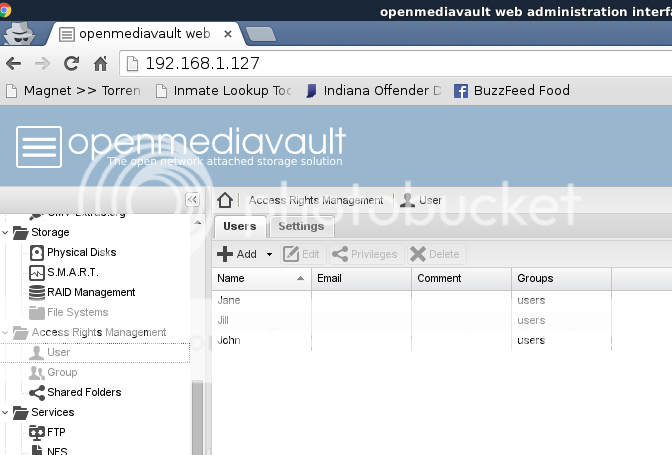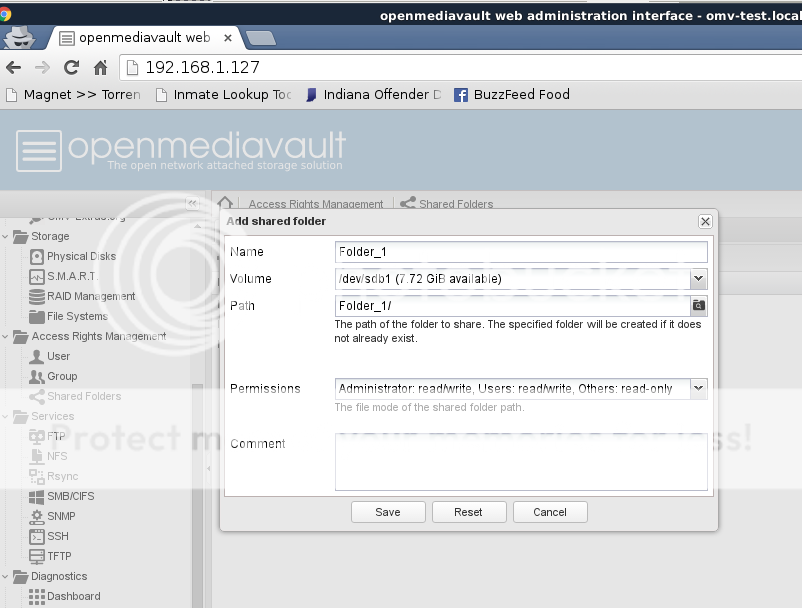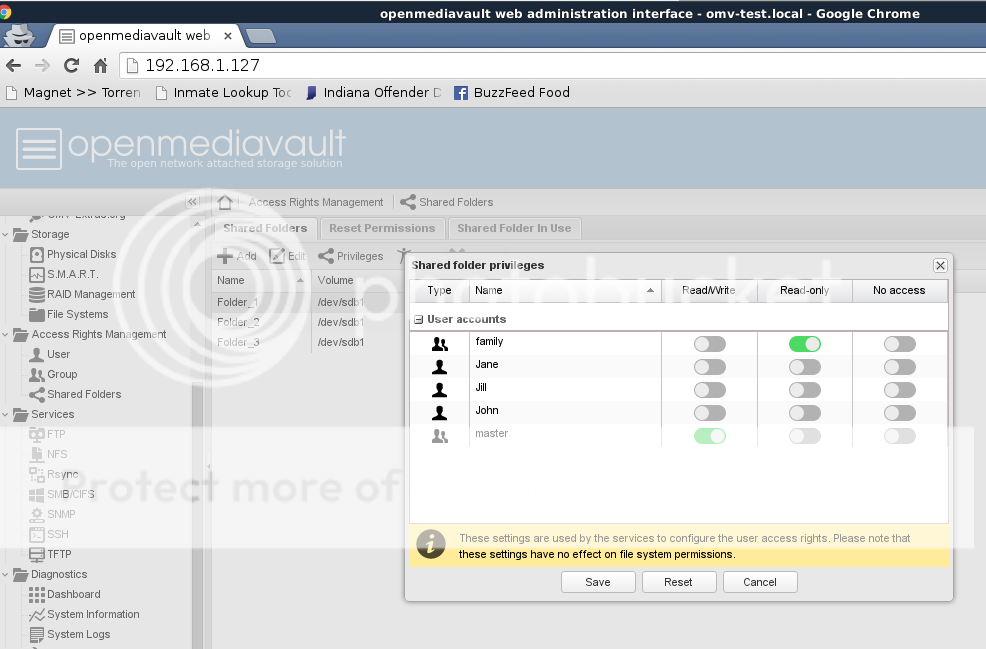This is probably going to be long, as I want to be thorough in the telling of what I am wanting to do. I have been running OMV for over a year, and it works, sometimes. I am wanting to re-do everything and start over, because permissions are giving me grief. Some users can write where they need to, some can't, etc. Maybe somone can tell me exactly what I need to do to get what I want
Setup:
OMV installed on laptop HDD
4 hard drives, (2) 2TB, RAID1 (Media), (1) 2TB (Data), and (1) 320G (Staging), and one 60G drive (System) will add more later
The media share is, obviously, for media - Movies, TV Shows, ROMs, photos, OS install images, program setup files, etc (I am a movie/music/tv show lover, and I am also a computer tech, so I tend to collect programs and install ISOs) - once there, the data does not change much, except to add more. Hierarchy:
/
Movies
TV Shows
Photos
ROM
OS Install
Programs
Personal Documents
On Staging, that will be for DVD rips, downloaded ISOs, new photos (I sort them according to event and year), etc. Stuff on here is fluid, and ideally the drive will stay empty for the most part, as the info will be moved to the Media share
On Data, that will be kind of a catch-all for various stuff, don't know exactly what, but the info will be mostly static
System is a drive for Mysql, Virtualbox, etc to house their info (database, a couple test VMs, etc.)
Groups/Users
John - should have read/write/everything access, no permissions issues or being told I can't do something, ever.
Family - Heather, John, Sandra, William, Michael, plus a Guest account - Should have read-only access to Media, and write access to Staging. Don't care about access to Data, as long as it's not write
Kodi - will have read-only access to Media, no access to any of the other shares.
I want to have the Mysql plugin installed for shared media library access for Kodi (I have 2 dedicated PCs - 1 Windows, 1 Mac Mini, connected to both of the TVs in the house, and both kids have it on their PCs). Database stored on System share
I want to have Transmission installed. incomplete directory will be on System, Complete and Watch directories on Media Staging (So that others can add torrent files and have them started).
I would like read/write access via SMB to all the shared folders. I would like to have NFS setup for the Media share, read-only, so that all the Kodi instances can have uniform paths across all platforms.
The transmission is a major sticking point. The way it is working now, Transmission can download everything, but via SMB I cannot MOVE the completed items out of the Complete directory to my Media disk - I always get a permission denied error.
Another issue is that a folder created on Data on one of the Kodi machines, I cannot add/delete/move anything in it from another computer/user- I can read it, just not write to it.
I know this has been long, and my root issue is permissions, but I just cannot figure it out. Normally I'd just go into it via SSH and chmod -R 0777 / on the entire drive, but I know that is not best practices, and it defeats the purpose of giving everyone different permissions. Thanks in advance for any light you can shed on this.
John




 .
.